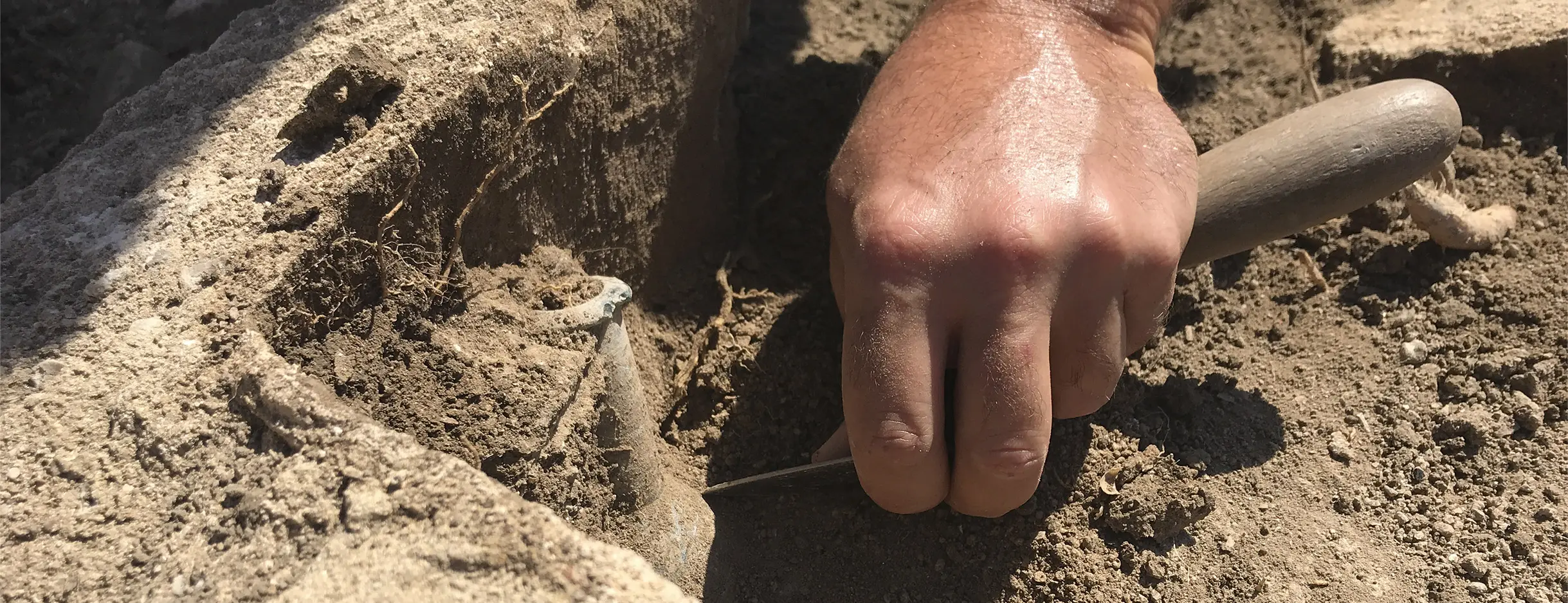
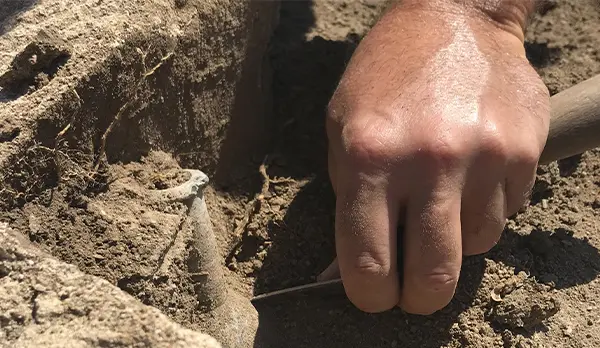
Archaeology and Finds
Archaeology and Finds
On the occasion of the restoration of the monastery, carried out between 1985-1993 and 2015-2016, the works were carried out in the presence of archaeologists who supervised all the planned earth moving phases. This has enabled to create some archaeological test excavations that have contributed to a better understanding of the monument and the previous phases of its life.
The excavations
The excavations
In 25 years, during various excavation sessions, various types of evidence have come to light which today tell us the story of the structure and of the territory in which it stands in a comprehensive manner. From burial methods to everyday objects, from jewels to a series of indications relating to agriculture and other livelihood activities of the past.
The excavations of 1990: the burials
Burials traceable to eleven individuals were found along the northern side of the church. Mostly arranged as best as possible directly following the profile of the rock bank and hence oriented in different directions; the presence of nails suggests that some of the buried were placed in wooden boxes. Few items of funerary equipment were found, such as bone pins, hollow bronze cylinders and a ring of the same metal. Only two burials have been hypothesised to have been carried out in a phase prior to the construction of the church, while the rest of them certainly occurred after its construction.


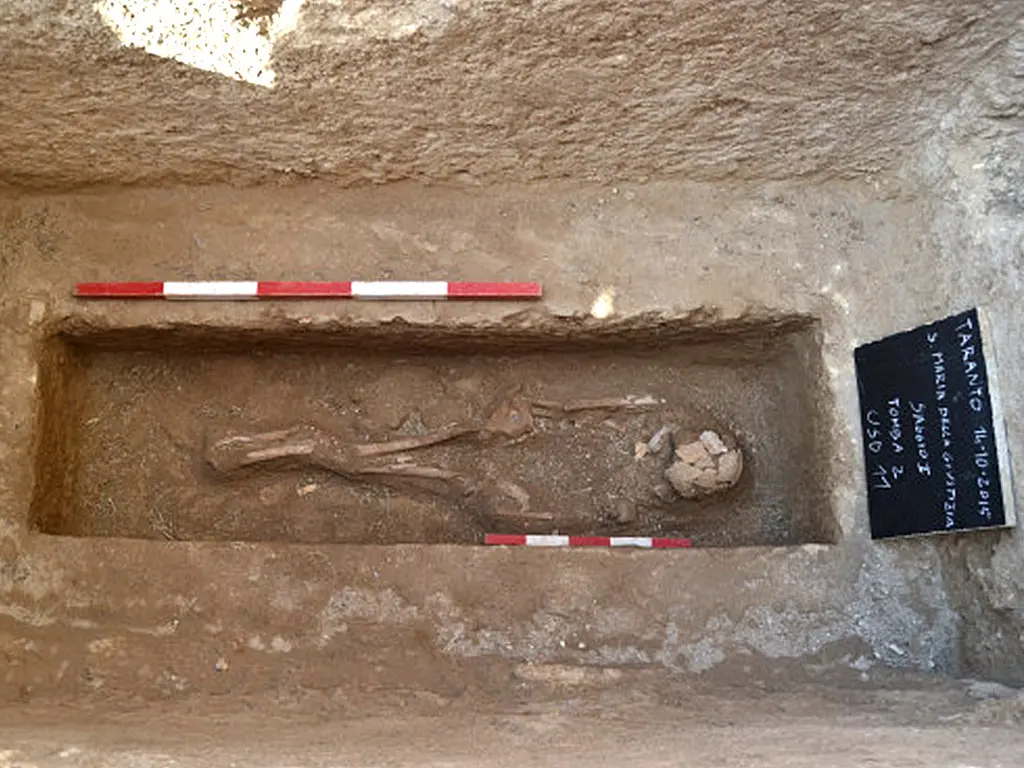
The excavations of 2015: the burial
Among the archaeological evidence that has emerged, outside, along the western side, there is a burial excavated in the rock bank, traceable to an individual of the 6th century BC, with a single piece of equipment, a trefoil jug. A copper coin, datable to the 15th century and reused as a pendant, was found near the excavation area in the 1990s.

Excavations of 2015: traces of cultivation
In the southern courtyard of the monastery, in the cloister, excavations have brought to light an elaborate and widespread canalisation system and wells dug in the rock bank; in general similar remains have emerged in different points of the architectural complex. They were used for agricultural activities prior to the installation of the medieval buildings and are specifically connected to the cultivation of vines. Similar testimonies, which can be dated between the Greek age and the Roman Republican age (6th century BC), are quite widespread in the surrounding area, such as those that emerged at Torre Montello, in the locality of Le Petrose and during the excavations at the Eni refinery.
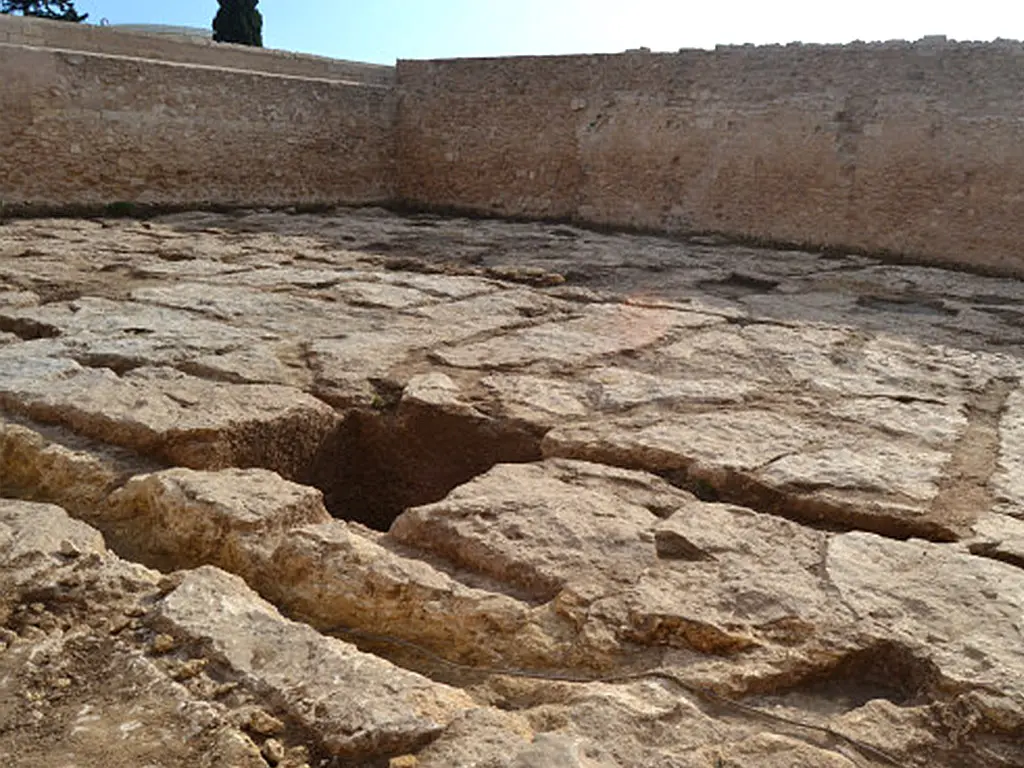

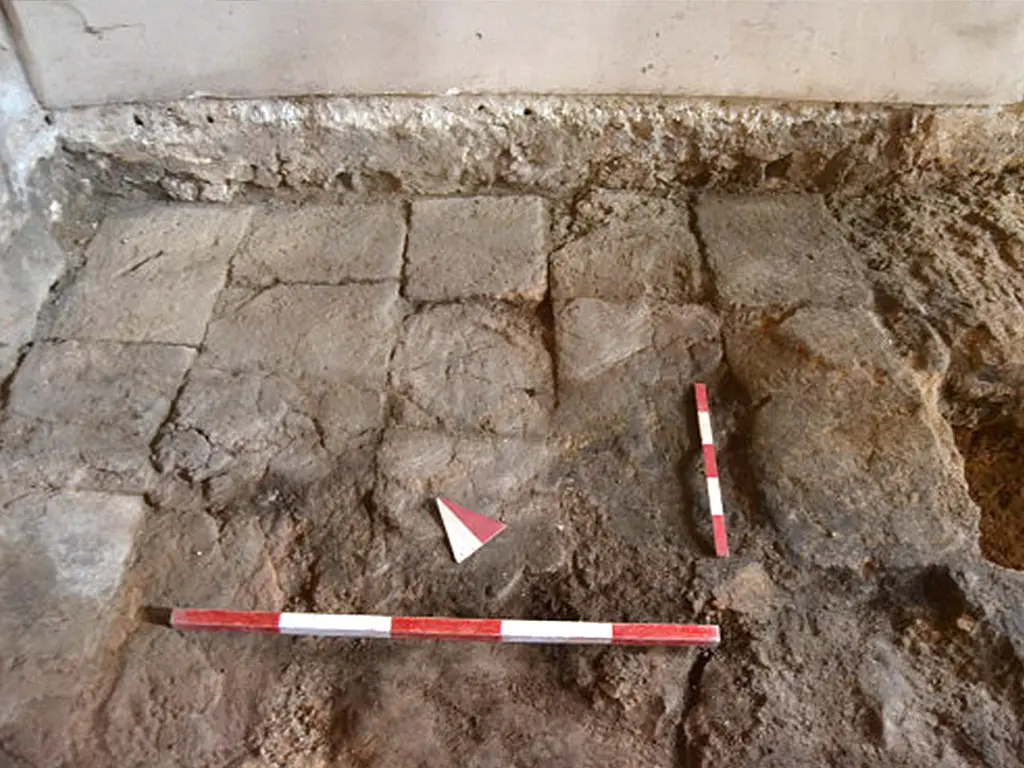
Excavations of 2015: the refectory, cisterns and kitchen
Archaeological investigations inside the refectory, which was probably built in the 14th century, have brought to light two barrel-vaulted cisterns, of different sizes, datable to the building’s installation phase.
At the north-western corner of the structure, a short distance from the larger cistern, the remains of a pavement delimited by two partially preserved wall structures have been identified; these remains belong to a room in which it is possible to assume that there was a kitchen which was used starting from the 15th-16th century.

Sunken Treasures
Sunken Treasures
I tesori sommersi
I tesori sommersi
The islet of San Nicolicchio rises a few metres from the western coast line of Taranto and nowadays it is incorporated, following a reclamation in the port infrastructures. Between 2004 and 2015, a submerged wreck was identified nearby, which was investigated through underwater archaeological excavation and later restored: the remains which were found were very damaged and can be assumed to belong to an unidentified boat keel which bears signs of the combustion which occurred before it sank. The remains are 10 metres long in total and belong to a single side of the boat. Furthermore, some floors and planking placed flush and caulked on the seams, joined with square-section iron nails, are clearly visible.
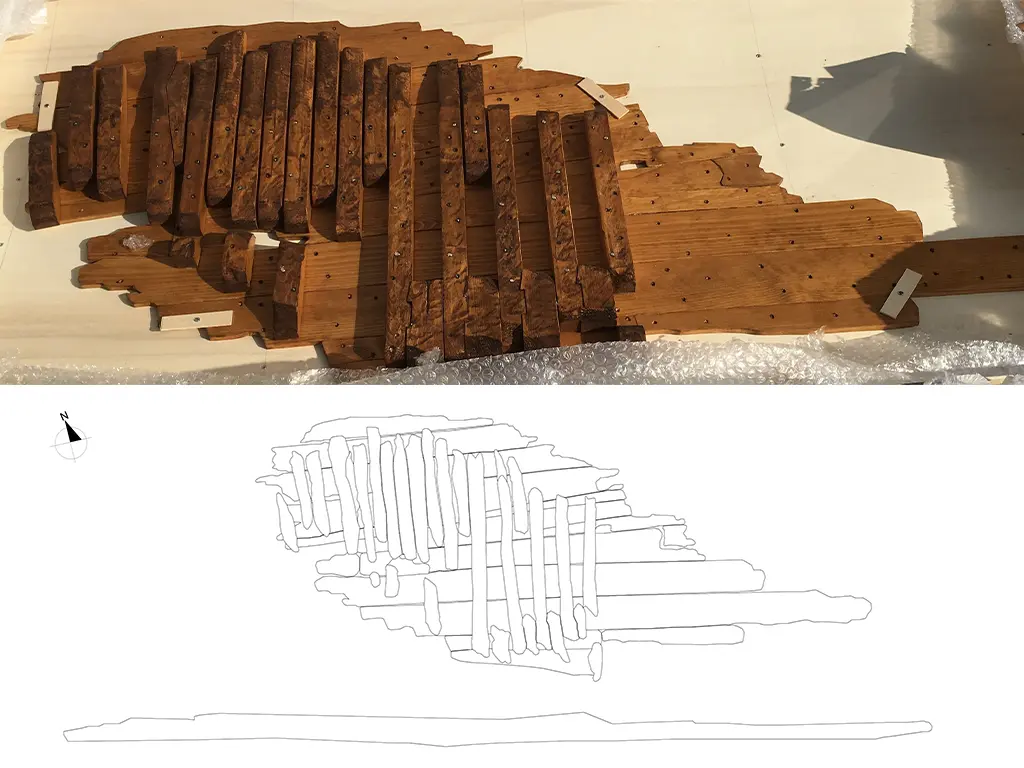
A sunken boat
On the basis of some structural elements, one can assume that the recovered portion of the boat probably belongs to the stern. The archaeological excavation and archaeometric carbon-14 dating have made it possible to date it between the 16th and 17th centuries AD The investigation has also made it possible to recover numerous archaeological finds which, due to the poor conditions in which they were found, do not allow to identify the possible elements regarding the cargo of the only known wreck in the bay, or to isolate ceramic groups referable to cargoes of other boats or to the frequentation of the islet of San Nicolicchio in ancient times. These, in fact, can be dated from the 4th century BC to the present day.

The islet of San Nicolicchio
Several evidence of anthropic presence has been discovered here over the years. Indeed, traces belonging to the Neolithic age and sporadic evidence of the Imperial Roman age (2nd-3rd century AD) have emerged. There are writings on quarry cuts, post holes and some burials probably dating back to the Middle Ages are documented.
From the sources we learn that the monastery of San Nicola Vetrianolo was present on the islet, donated in 1119, together with Santa Maria della Giustizia, to the church of San Pietro Imperiale (now San Domenico in the Old Town). The document mentions the presence of two small fishing boats, used by the monastery.
Later on, the islet of San Nicolicchio had a strategic function and was a landing place for Spanish and French troops, who set up a defensive battery with six cannons at the beginning of the 19th century.
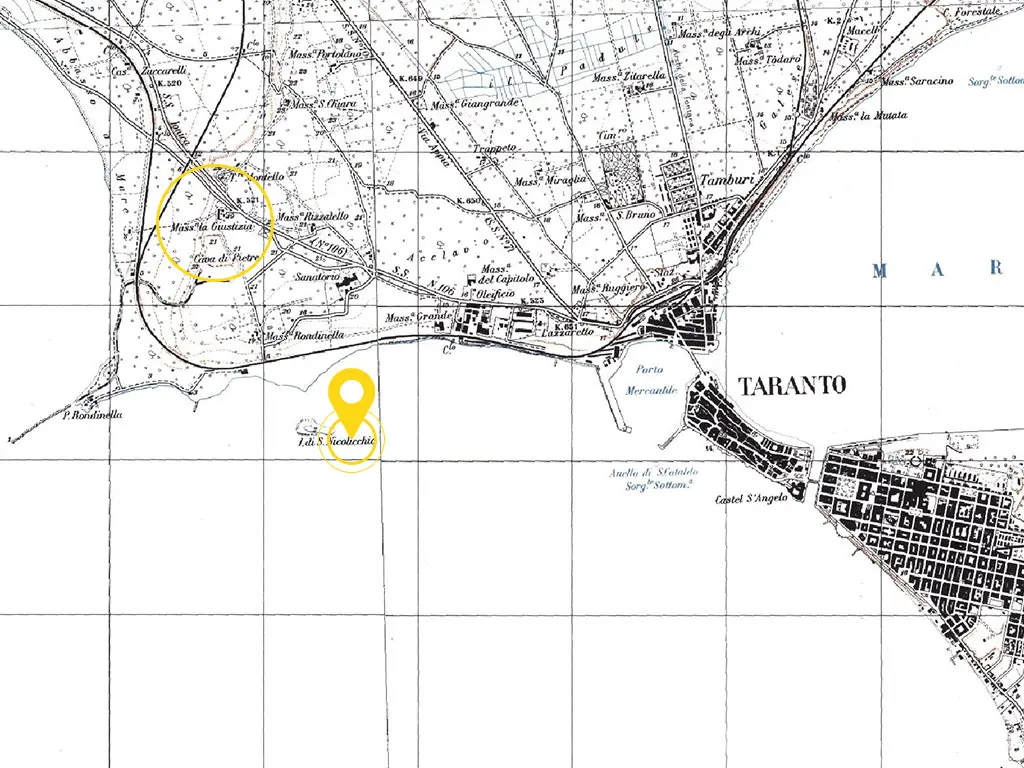

The finds
Discover the images of some artefacts found during the archaeological investigations at the monastery and the underwater excavations that took place on the islet of San Nicolicchio.
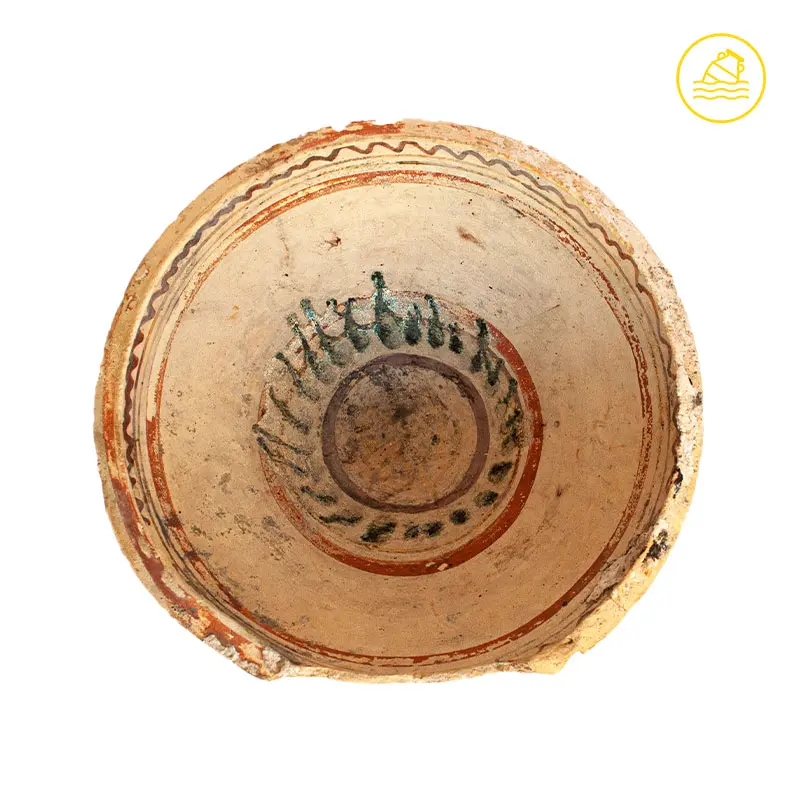
Bowl
Polychrome glazed bowl type “RMR” (mid 13th-14th century AD), typical of late medieval Apulian works and used for meals. The decoration is obtained with green, brown and red colours on a cream-coloured background, while the surface was originally covered with lead-based clear glaze.
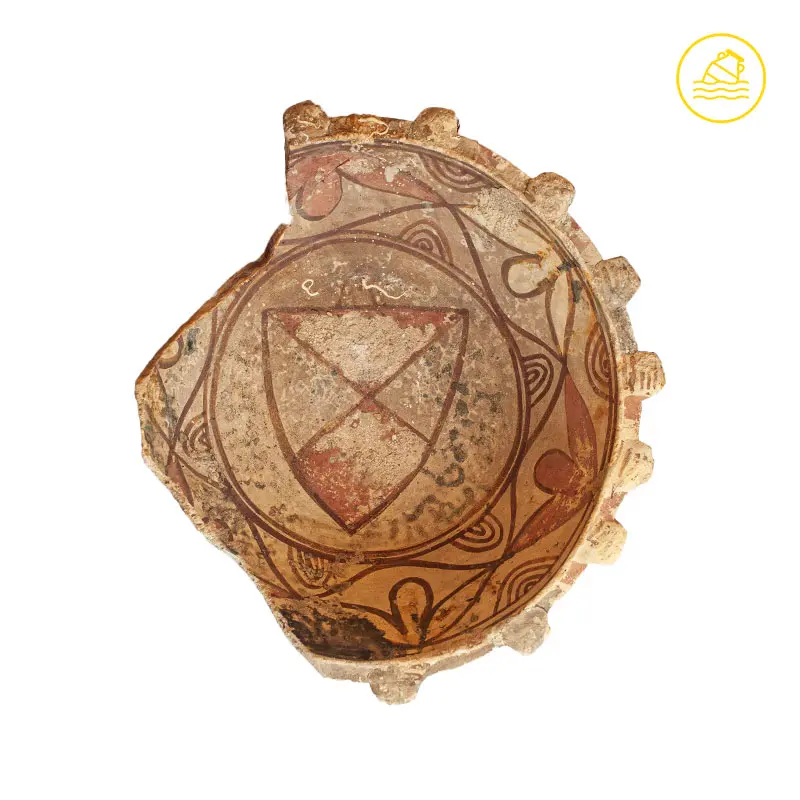
Multi-handled basin
Multi-handled basin in polychrome glazed ceramics (14th-1st half of the 15th century AD). The piece has a plastic decoration with small handles on the edge; the internal decorative motif is made in red with white backgrounds. A heraldic shield stands out at the bottom, while there are stylised red and white plant motifs on the sides.
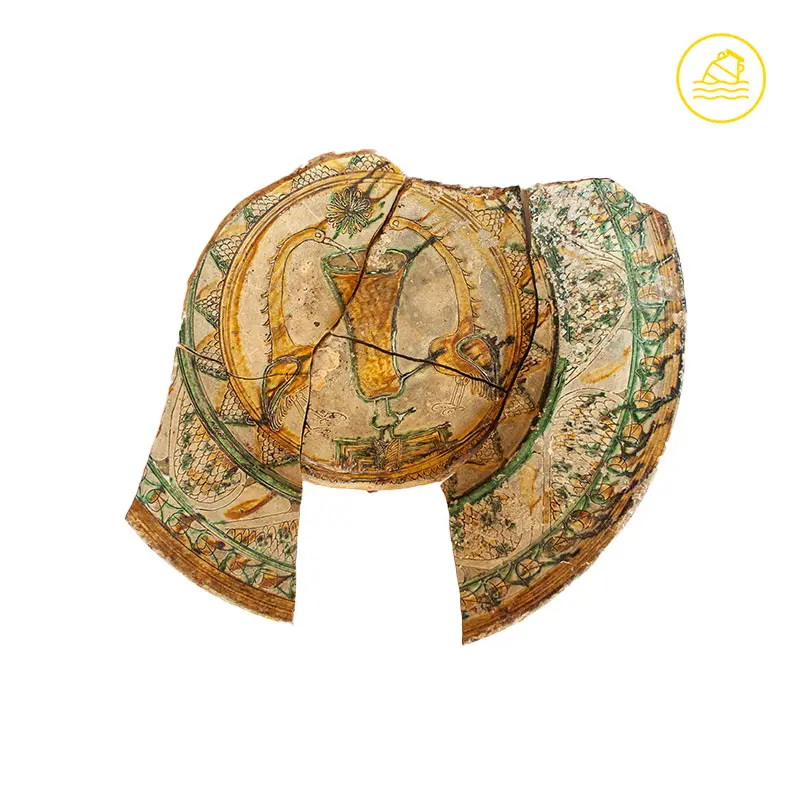
Plate
Large plate made of polychrome engraved ceramics (16th-17th century AD). It is a local production of the Renaissance period, whose provenance corresponds to the types of works widespread in Salento. The decoration consists of two birds who are facing each other, quenching their thirst from a stemware piece and is obtained from the green and yellow colours used to finish the scratching.
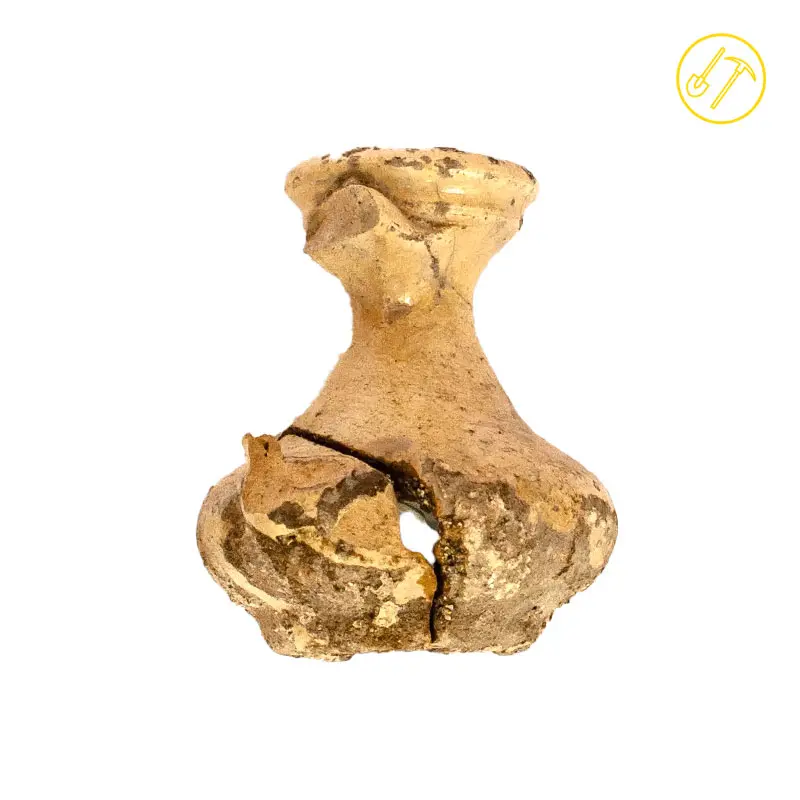
Candle holder
Candle holder in glazed ceramics found in the archaeological excavations of the refectory, in stratigraphies datable between the end of the Middle Ages and the beginning of the Modern Age. The find, quite widespread in Italy, offers evidence of the monastery's lighting systems and is very similar to objects still used today for this purpose.
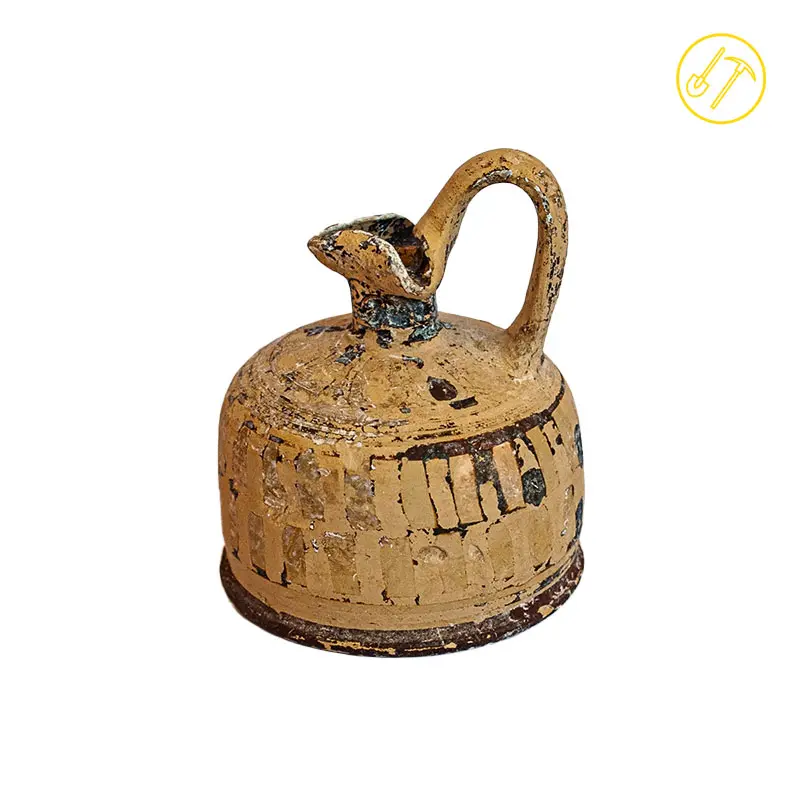
Oinochoe
Corinthian Oinochoe (1st half of the 6th century BC) found in a pit tomb with a female burial. It is a small jug which is seldom found in the archaic necropolises of the Greek city and the surrounding area.
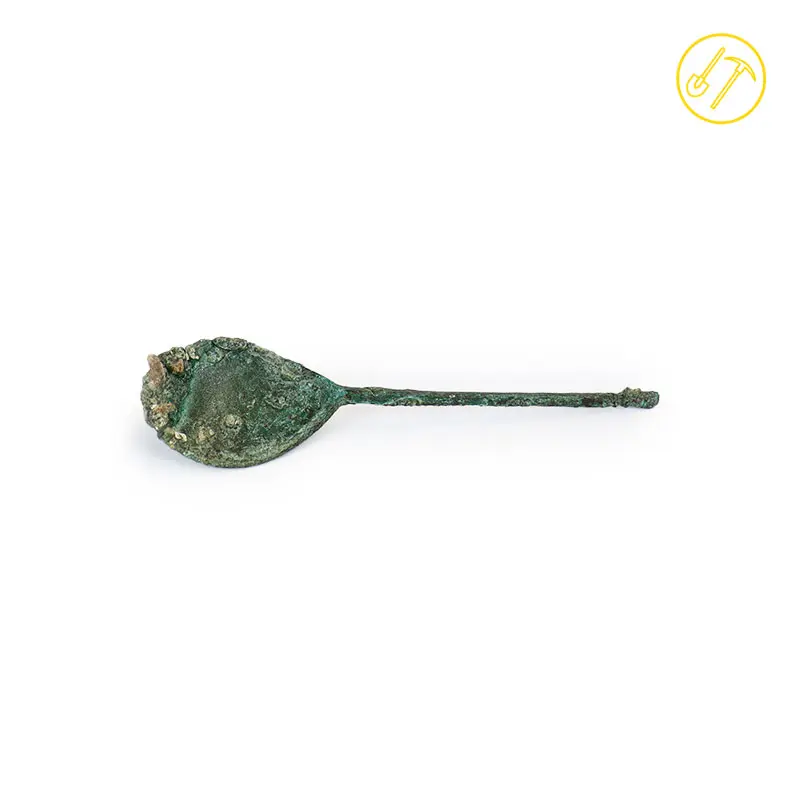
Spoon
Bronze spoon found in the archaeological excavations of the refectory, in stratigraphies datable between the end of the Middle Ages and the beginning of the Modern Age. The find, quite widespread in Italy in this period, is probably linked to the phase in the monastery’s history.
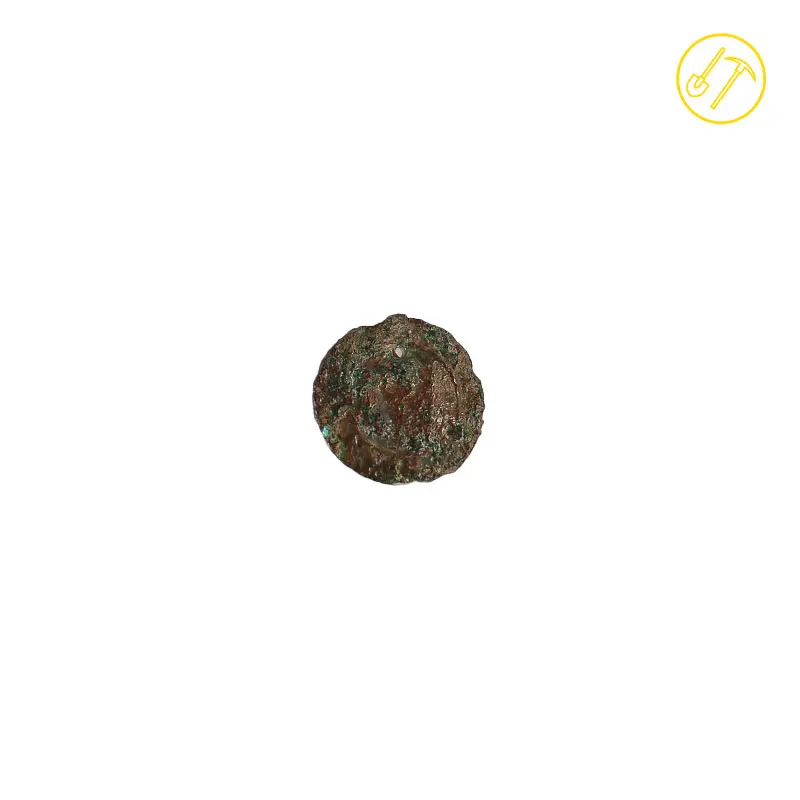
Coin pendant
Bronze coin probably of Venetian production reused as a pendant for a necklace, or bracelet or as a pendant, as indicated by the through hole. It was found in an excavation trench outside the church, near an area marked by various burials. It is in poor condition and conservation and is barely legible.
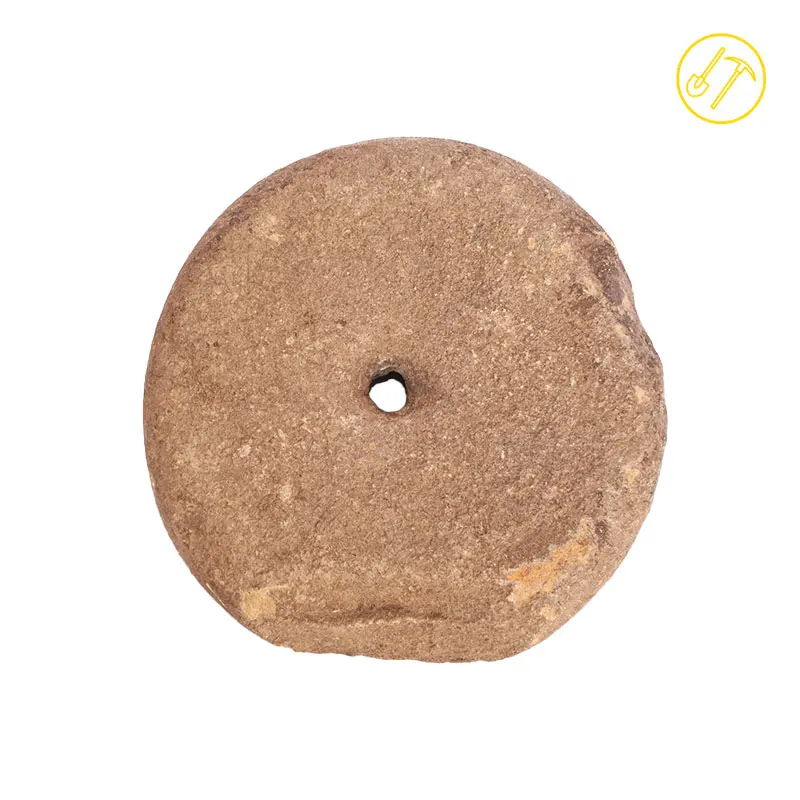
Grinder
Calcarenite stone grinder with a central hole, found in an area outside the monastery. The millstones were made up of two superimposed lithic discs that rotate around a central pin. The cereals, inserted from above, were reduced to flour which was channelled outwards by the rotation of the two elements.
3D Reconstructions
Some of the finds from the same archaeological contexts have undergone 3D processing and virtual restoration. The reconstructions of the missing parts are rendered in a different colour from the one of the original parts.
Bowl
Bowl made of polychrome engraved ceramics (16th-17th centuries AD). The yellow and green colours, on a cream-coloured background, alternately highlight the concentric engraved lines along the walls; on the bottom a stylised leaf is reproduced in two colours. This type of crockery was used for the canteen.
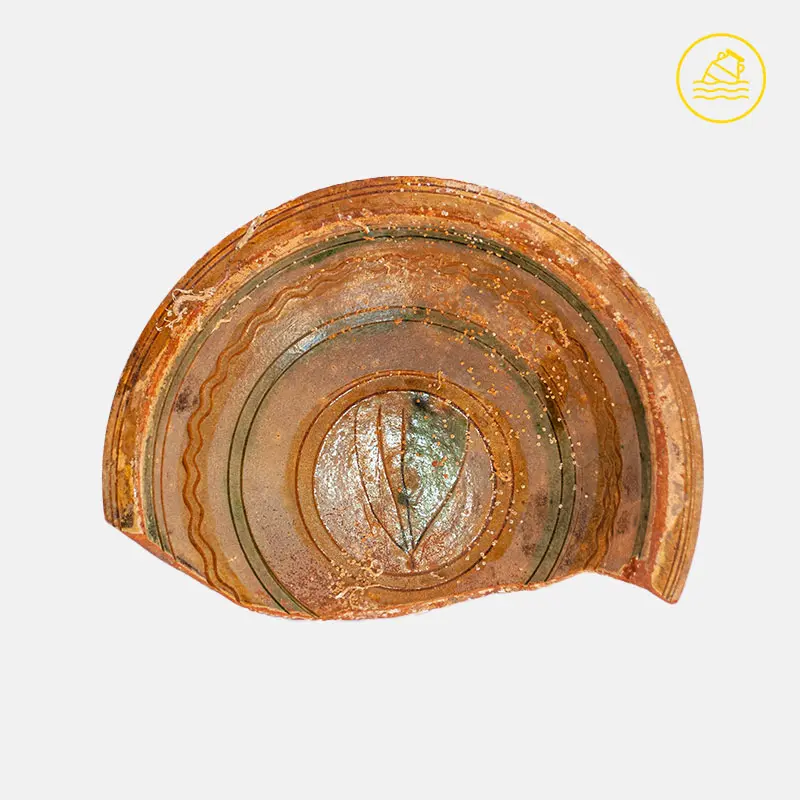
Ointment jar
Black varnish ointment jar (last decades of the 4th century BC). Ointment jars, of various sizes and materials, were widespread in the Taranto of the Greek period and are often found inside tombs. The ointments, which were personal care products, were obtained by adding an essence obtained from roots, flowers and resins to an oil (olive, sesame, flax and almond).
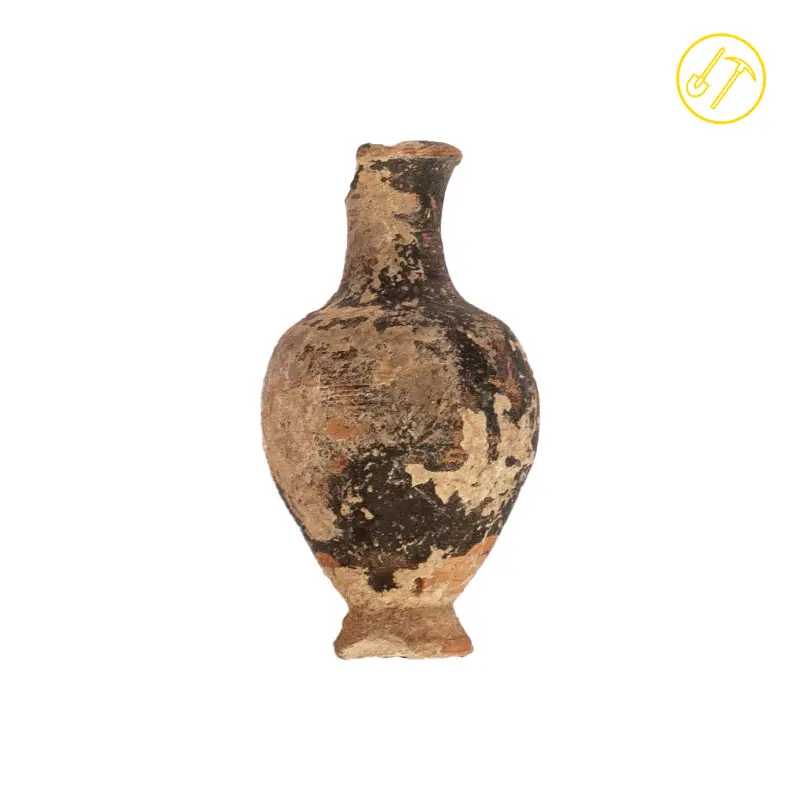
Terra e Mare …. Custodi della storia
Lorem ipsum dolor sit amet, consectetur adipiscing elit, sed do eiusmod tempor incididunt ut labore et dolore magna aliqua. Ut enim ad minim veniam, quis nostrud exercitation ullamco laboris nisi ut aliquip ex ea commodo consequat. Duis aute irure dolor in reprehenderit in voluptate velit esse cillum dolore eu fugiat nulla pariatur. Excepteur sint occaecat cupidatat non proident, sunt in culpa qui officia deserunt mollit anim id est laborum.


